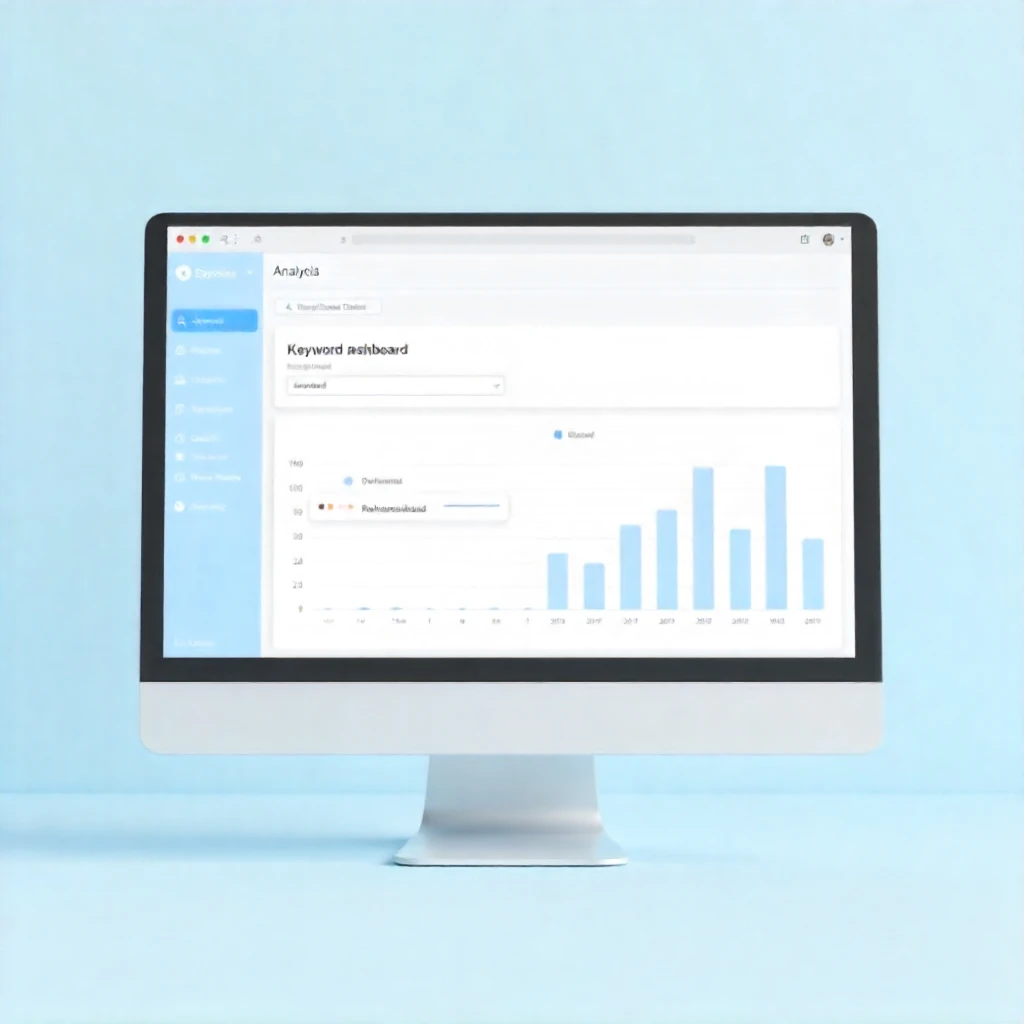
The first step in getting a website optimized is to utilize the appropriate keywords at the appropriate locations. When someone asks how I add keywords to my site, I explain that it involves planning and positioning. It also requires knowing how search engines analyze content.
SEO measures how relevant you are to what users are searching for. This is true whether you have a multi-page site or a simple single-page site.
In this guide, you will learn where to place your keywords. You will also see how to add them naturally. We will cover how to submit your site to search engines. Finally, you will learn how to check the performance of your keywords.
Why are Keywords Relevant in SEO?
Keywords assist the search engines in knowing the nature of your site. When you type a question into Google, it searches billions of pages. It finds the most relevant information for you.
If your pages have important keywords in the right places, your site is more likely to show up in search results. Keywords guide search engines and your visitors. They help users understand the main topic of your site.
How to Add Keywords to Your Website in a Step-by-Step?
The addition of keywords does not concern any stuffing. It is concerned with page matching search intent. The following gives a full detail of the location and use of keywords.
1. Add Keywords to Page Titles
The first aspect that the search engines consider is your page title. Add your major key phrase once in the title. Make it brief, concise, and on point. This assists search engines in determining the subject of your content and also increases the rate of your click-through.
2. Place Keywords in Headings
Subheadings provide order to your work. Naturally, you should use your secondary keywords in H2 and H3 headings. This enhances easy reading and makes the search engines recognize the large parts of your page.
Do not stuff keywords in all headings. A keyword in each section is sufficient.
3. Contain Keywords within the First 150 Words
The search engines carefully analyze the introduction. The first paragraph uses the main keyword. It is an indication of relevancy and establishes a direction in which the content is to follow.
4. Apply Keywords in Body Contents
Put your keywords in their natural state. Break them and place them in various paragraphs, and correlate them to the subject. Naturalness of your content to the reader is necessary. Google currently attaches great importance to user experience, and thus any imposed or repetitive keywords will lower your positions.
5. Optimize Meta Descriptions
A meta description does not have a direct impact on ranking, but it has an effect on the click-through rates. Incidentally, include the primary keyword in the meta description at minimum one time. Put it in a brief outline that attracts users to make a click.
6. Add Keywords to the Image Alternative Text
Image searching engines are blind. Alternative text will assist them in knowing what the image is about. Add text description with a natural placement of keywords. This enhances the SEO and eases the accessibility of the visually challenged users.
7. Include Keywords in URLs
Short URLs are also readable and better. Where feasible, put one of the keywords in the URL. Avoid lenient long strings of figures. The clean keyword optimized URL enhances the ranking potential and clarity.
8. Internal Links with Keywords
Internal linking aids in the crawling of the search engines. Make use of key word rich anchor text, which gives an explanation of where the connection will take you. This builds a powerful content framework and retains users.
One-Page Web SEO and Keyword Placement
In case of a single-page site seo, you have to do SEO in a different way. Place all the content on a single page to ensure a strategic distribution of keywords. Make distinct sections that represent various issues of your topic. Insert H2 and H3 headings of every section so that the search engines are aware of the structure.
Use these parts with secondary keywords to prevent the occurrence of the same phrase in too many places. The single-page site needs good internal navigation. On-page jump links can help make it user-friendly and search engine-friendly.
How to Register Site With Search Engines?
Once you have added keywords, you need to get your site registered by the major search engines. This assists search engines in finding your content in a faster manner.
- Register Your Site with Google Search Engine.
- Visit Google Search Console
- Add your domain
- Verify ownership
- Submit your sitemap
- After submitting your sitemap, Google will then have the ability to crawl the pages and index them properly.
- Bing Webmaster Tools registration.
- Visit Bing Webmaster Tools
- Click Add Site
- Post a sitemap or Google search console import settings.
The idea behind registering your site is to enhance visibility and to have your optimizations taken into consideration.
The Keyword Performance Monitoring
Once a set of keywords has been added, monitor their performance. You can view impression, clicks, and ranking changes using tools such as Google Analytics and Google Search Console. You can modify your keyword strategy based on what works well and what needs change.
How to Search for a Keyword on a Webpage?
Upon reviewing published material, you might be interested in establishing whether there is a keyword on the page. Use the shortcut search key on the keyboard.
Windows Press Control/Mac Command. Search for the keyword, and all the instances will appear highlighted in the browser. This assists you in finding out the location of the keywords or the opportunities that you have overlooked.
Areas of Keyword Mistakes
Novices commit mistakes that reduce the pace of results. Avoid the following:
- Keyword stuffing
- Using irrelevant keywords
- Ignoring user intent
- Using the same keyword in all of the headers.
- Not updating old content
- Leaving out registration with search engines.
Good SEO requires content and the use of natural keywords.
FAQs
1. How many keywords should we use per page?
Ans: Use one keyword and two or four related keywords. The idea here is natural positioning and not repetition.
2. What is the ideal keyword density?
Ans: There is no fixed percentage. Write naturally, and be able to have your material on point.
3. Does the positioning of keywords have an impact on ranking?
Ans: Yes. Titles, headings, and introductions play significant roles in ranking.
4. Can I rank a single-page site?
Ans: Yes. An SEO strategy for a single-page site works well with strong headings, quality content, and proper keyword placement.
5. Should I register with search engines?
Ans: Yes. A site submission guarantees faster indexing and greater visibility.
Conclusion
To add keywords to my website, I need to understand the basics of SEO. This involves placing keywords strategically, using them naturally, and analyzing their performance regularly.
When you use keywords in titles, headings, URLs, meta descriptions, body text, and image alt tags, it helps search engines. This makes it easier for them to understand your content. This also improves the user experience.
Combine this with proper site submission and regular performance checks. This way, you can improve your strategy for better rankings. By focusing on relevance, search intent, and clarity, your website will be more visible and useful. This helps improve your long-term SEO success.

